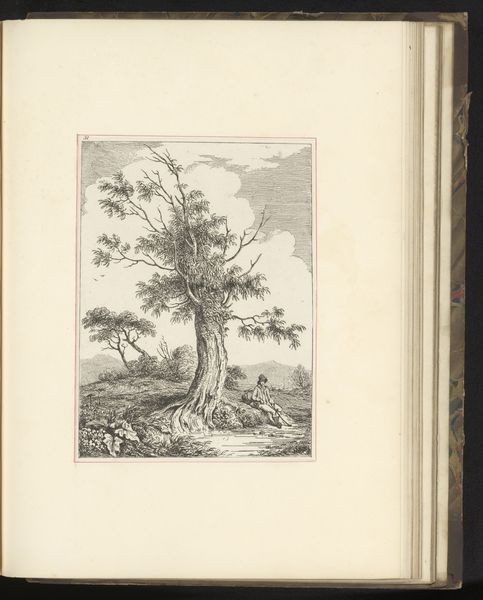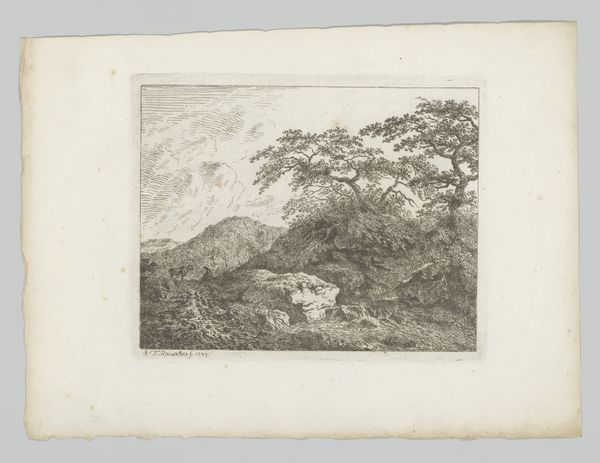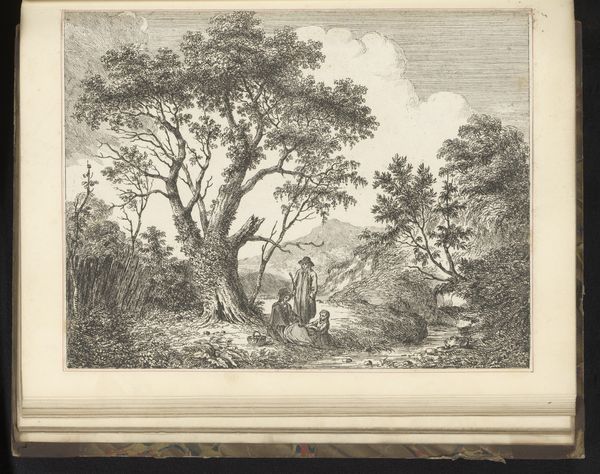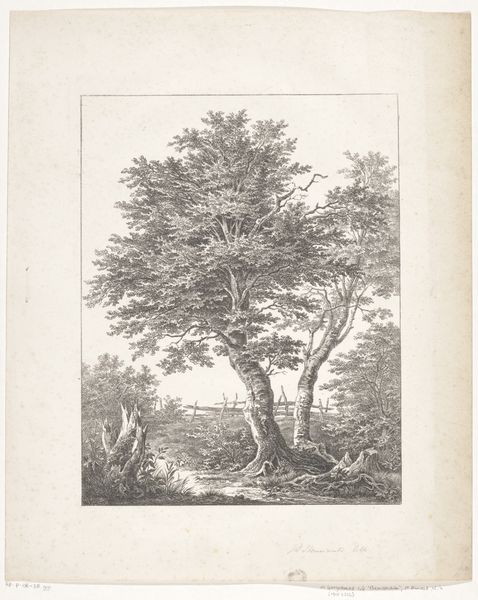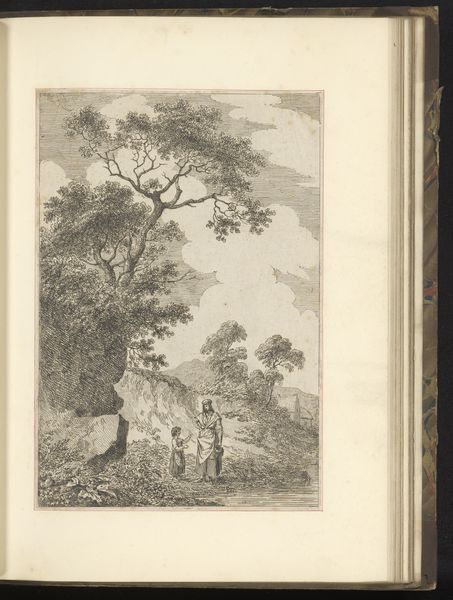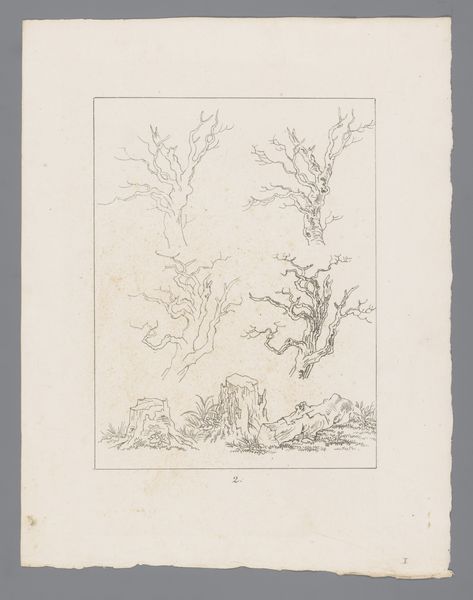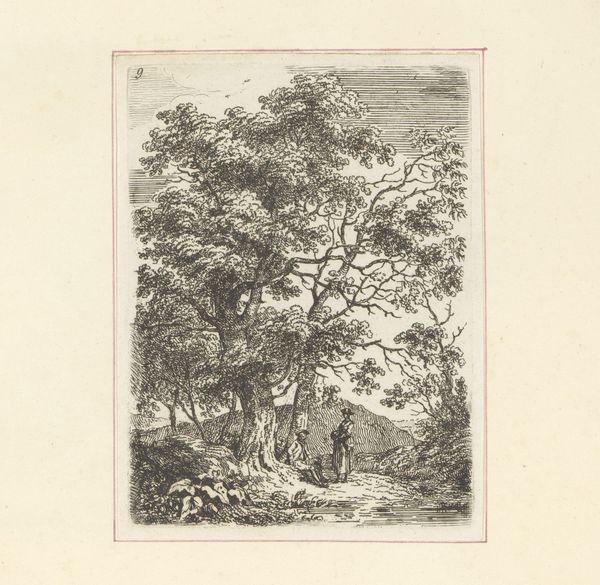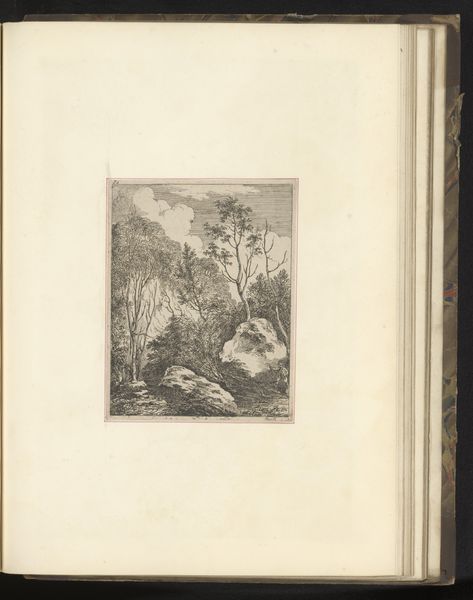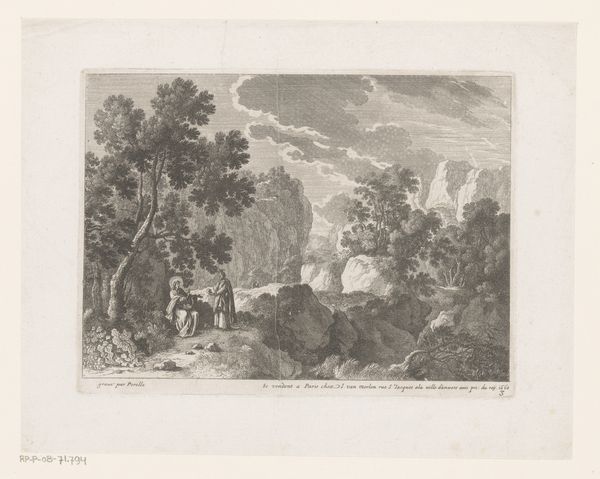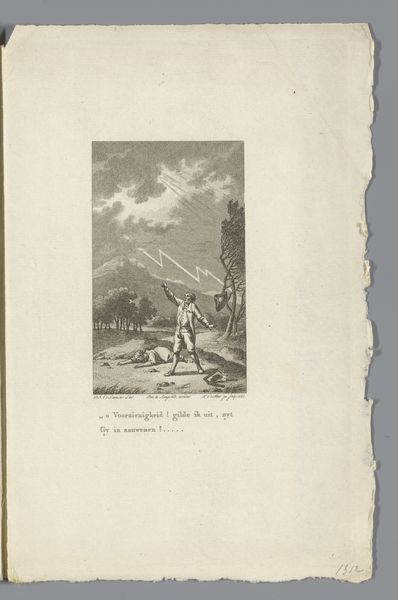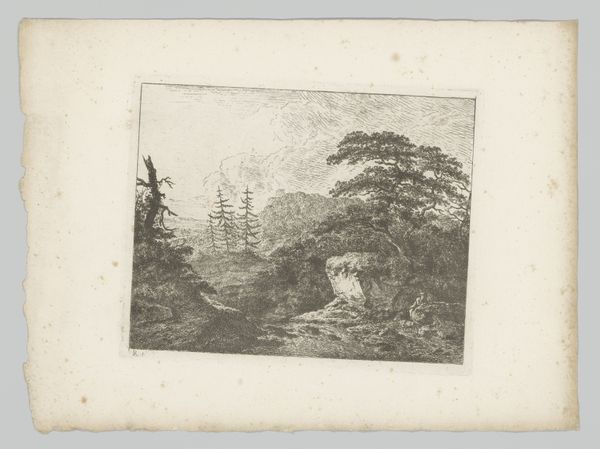
drawing, etching, ink
#
drawing
#
neoclacissism
#
etching
#
landscape
#
ink
Dimensions: height 248 mm, width 172 mm
Copyright: Rijks Museum: Open Domain
Curator: Here we have "Landscape with Trees", an etching in ink from around 1789-1790, created by Edward Edwards. The work is currently held in the Rijksmuseum's collection. What are your first impressions? Editor: It feels quite melancholic. The stark contrasts and barren tree give off an air of desolation, yet there's a peculiar serenity in the composition. Curator: Interesting. Given the period, and Edward’s personal context, the melancholy aligns with a growing societal disillusionment following enlightenment ideals that is felt even within neo-classicism, which traditionally seeks ideal forms and balanced composition, we can consider it as a marker of cultural and intellectual exhaustion. This shift is interesting, particularly through his choice to give presence to death via the motif of a barren tree against lush green forests. Editor: The stark, almost skeletal tree becomes a focal point, doesn’t it? Death, or the suggestion of mortality, appears, set against the cyclical nature of life, of burgeoning foliage and light clouds. I’m also drawn to how he contrasts the rough textures of the foreground with a hazy background; he captures nature as a mirror to personal grief in this composition, death stands among growth. Curator: Precisely. The symbolism is not merely about pastoral beauty but rather how power and human life, are inevitably bound with death. We cannot escape such mortality despite the grand projects humans will inevitably partake in, it is like how nature and wilderness will always prevail. Edwards himself had a relatively successful career, yet the looming sense of futility seeps in from these trees. The social commentary cannot be understated. Editor: The image leaves me wondering what the image says about individual and social decline, in relationship to the broader patterns that appear across all human societies in the era, not to say the era of decline had disappeared but to re-assert it as the ground for building upon. It does make you think, doesn’t it? Curator: Absolutely, a beautiful reminder that landscape art in that time offers commentary as much as they attempt a pictorial project of aesthetics. Editor: Indeed, food for thought long after our viewing, the artist ensures the message stays.
Comments
No comments
Be the first to comment and join the conversation on the ultimate creative platform.
